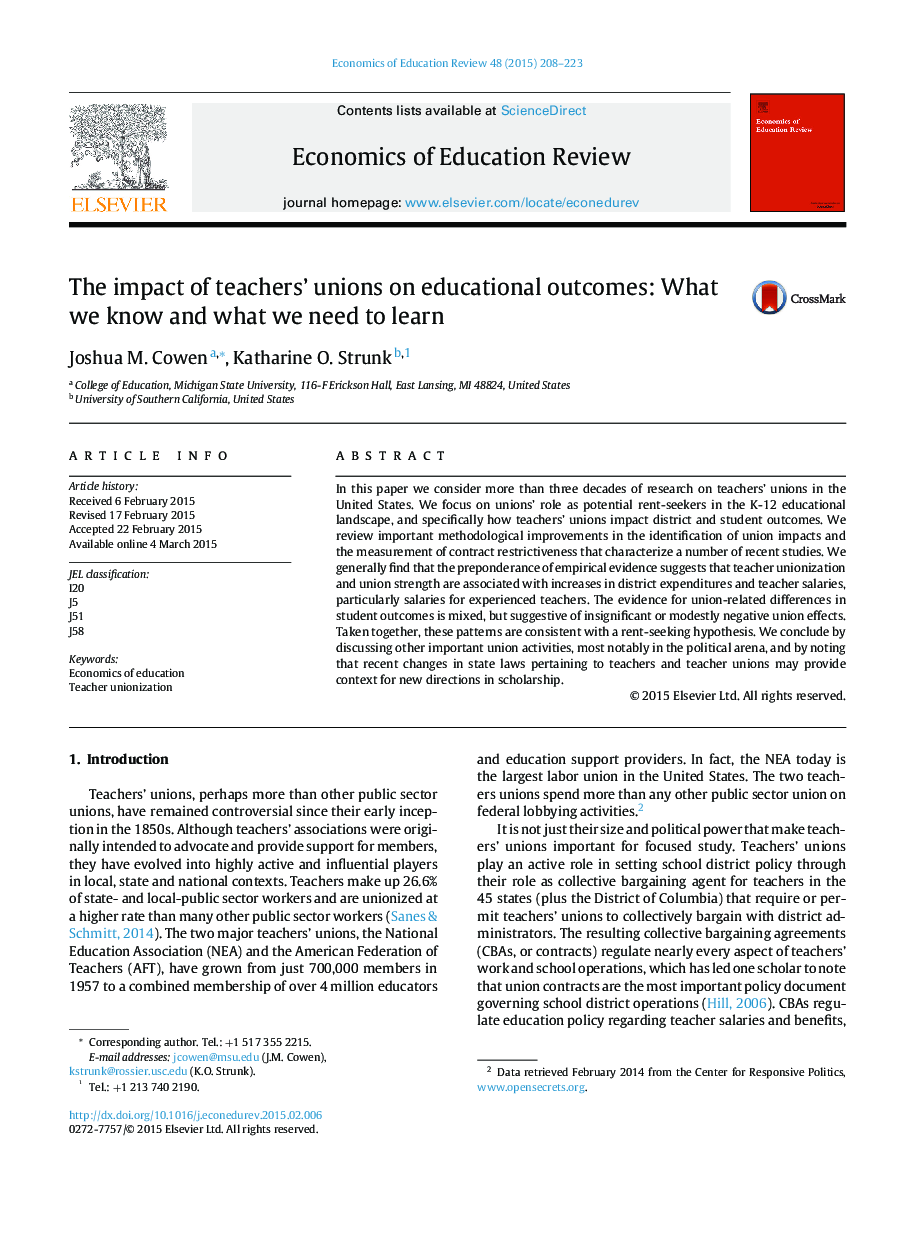| Article ID | Journal | Published Year | Pages | File Type |
|---|---|---|---|---|
| 354361 | Economics of Education Review | 2015 | 16 Pages |
•We consider three decades of research on teachers’ unions in the United States.•We focus on how teachers’ unions may impact district and student outcomes.•We review important methodological improvements in recent studies.•The empirical patterns are consistent with a rent-seeking hypothesis.
In this paper we consider more than three decades of research on teachers' unions in the United States. We focus on unions' role as potential rent-seekers in the K-12 educational landscape, and specifically how teachers' unions impact district and student outcomes. We review important methodological improvements in the identification of union impacts and the measurement of contract restrictiveness that characterize a number of recent studies. We generally find that the preponderance of empirical evidence suggests that teacher unionization and union strength are associated with increases in district expenditures and teacher salaries, particularly salaries for experienced teachers. The evidence for union-related differences in student outcomes is mixed, but suggestive of insignificant or modestly negative union effects. Taken together, these patterns are consistent with a rent-seeking hypothesis. We conclude by discussing other important union activities, most notably in the political arena, and by noting that recent changes in state laws pertaining to teachers and teacher unions may provide context for new directions in scholarship.
